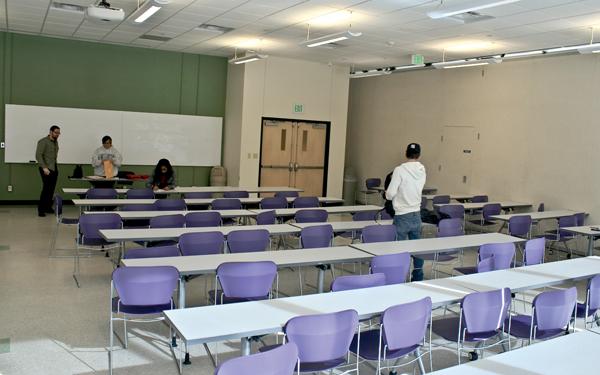
Enrollment in Binghamton University’s Graduate School has dipped this semester for the first time since 2006, after devastating floods exasperated enrollment problems caused by an already strained economic climate.
Graduate enrollment decreased by roughly four students from 2010, a 0.4 percent drop, according to Nancy Stamp, vice provost and dean of the Graduate School. The decrease in graduate enrollment experienced by BU could potentially result in a drop in various forms of state funding to the University.
This decrease in enrollment comes shortly after the University announced a plan in August to increase student enrollment by 2,000 students by the 2015-16 academic year.
The plan to increase enrollment is part of the University’s response to Gov. Andrew Cuomo’s NYSUNY 2020 Challenge Grant Program. The bill required the SUNY University Centers in Albany, Binghamton, Buffalo and Stony Brook to submit detailed, long-term economic and academic proposals to make SUNY a catalyst for job growth and to improve academic programs in order to be eligible for $35 million per school.
BU’s outlined plan included tuition increases over the next five years to raise money that would be used to hire new faculty, fund construction projects, support University services and provide financial aid to students.
The enrollment shift could have an impact on the amount of state funding BU is eligible for, if drops in graduate enrollment continue. The University receives more money from the state for each graduate student enrolled than each undergraduate student enrolled, according to a report from Inside Binghamton, the University-published magazine. Two undergraduate students must enroll at the University in order to offset the cost of losing one graduate student.
Preliminary estimates by the Provost’s office show Binghamton increased its undergraduate enrollment by 17 students in 2011, which offsets the drop of four graduate students.
Robert Guay, an associate professor, said that the recession has made it difficult for graduate programs to effectively attract students.
“The poor economy has made for a poor academic job market, which puts downward pressure on applicants,” Guay said.
In addition to economic troubles, the floods that ravaged the Southern Tier in September contributed to the enrollment dip.
Stamp said she estimates between 50 and 100 graduate students did not attend this semester after their homes or possessions were ruined by the flood.
Along with BU’s overall decrease in graduate enrollment, graduate enrollment by international students also dipped this year, according to Stamp.
Elif Sendur, a doctoral candidate in comparative literature, said she thinks this is due to cuts in teaching assistant funding, which international students rely upon more heavily than domestic students.
A limit on the number of hours international students can work per week forces many of them to choose a university based solely on the university’s ability to guarantee graduate students annual stipends.
“When I came, [Binghamton] was able to guarantee four years of funding, but the funding cap changed and now they can only offer funding year to year,” Sendur said. “If I were just starting graduate school, I would choose a different university that could guarantee funding.”
Guay said that Harpur College does not have the budget to provide tuition for TAs. He added that the philosophy department can fund one less student now than they could a few years ago.
“If we lose a TA line, that translates into a smaller incoming class,” Guay said.


